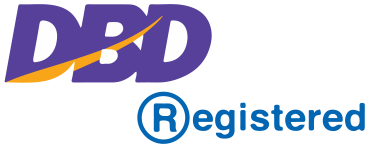Using My Product
I've noticed a slack in the vehicle seatbelt while using my Group 2/3 child seat. What should I do?
The function of the vehicle seatbelt in a Group 2/3 child car seat (Britax KIDFIX II XP (SICT), KIDFIX XP (SICT), KIDFIX SL (SICT), KID II, DISCOVERY SL and ADVENTURE) is to hold it and the child firmly and properly in place. Insufficient (incomplete) seatbelt retracts can be a common issue with Group 2/3 child car seats. There are many factors that contribute to this including the temperature outdoors and in the car, as well as the angle of the vehicle seatbelt as it goes through the upper belt guide of the child car seat. Since the upper point at which a car’s seatbelt connects to the body of the car is not the same in all cars, the result varies case by case depending on car type, child car seat, headrest position and other circumstances. Upon purchasing the child car seat, it is important to do an installation test. Please also try to ensure that the vehicle seatbelt retracts sufficiently when your child is sitting in the child car seat.
To determine if you have an issue, please check the vehicle seatbelt retraction when using the Group 2/3 child seat.
Checking your child car seat:
Please always follow the user guide of the car seat (incl. type lists if applicable) and car for the installation of the child car seat.
1) When your child is sitting in the child car seat, make sure that the vehicle seatbelt runs smoothly and securely through the upper belt guide and lower belt guide.
2 ) It is important that the vehicle seatbelt fits snugly and consistently against the body of the child so that it keeps the child and child safety seat securely in place. Always make sure the seatbelt is properly fastened and ensure that it is not twisted.
3) Once the child has been seated, ask your child to lean forward and then back in the child car seat. Should you notice that the vehicle seatbelt does not retract fully and there is a slack in the seatbelt, please try the following:
- Adjust the headrest of the child car seat so that the headrest is, where possible, 1-2 slots higher or lower (subject to the height of the child and additional guidance in the user manual) than its previous position.
- If the belt-retract is still insufficient and the child car seat has an XP-PAD, please test the belt-retract without using the XP-PAD. If the seatbelt sufficiently retracts without the XP-PAD, then the child car seat should be used without the XP-PAD. Even without the XP-PAD, the child car seat still provides superior safety performance.
- Should these steps not solve the issue, then please do not use this car seat and contact Britax customer service immediately.
- If the vehicle seatbelt remains properly in place when your child moves around while seated, but does not fully retract when your child climbs out of the car, then you can use the child car seat without any restrictions.
What pushchairs are compatible with Britax infant carriers?
All Britax infant carriers are compatible with all Britax and Britax BOB pushchairs. They are also compatible with the below models from other leading pushchair brands.
More information on compatible pushchairs
Please ask trained store staff for the required adaptors and do contact the pushchair manufacturer if you have any further questions.
Can I use my car seat on a plane?
The following Britax models have been approved for use on a plane:
- BABY-SAFE
- BABY-SAFE plus
- BABY-SAFE plus II
- BABY-SAFE plus SHR II
TÜV ID number 9811400300 (ECE approval no. 03301146 or 04301146)
Suitable for children up to 13kg, or until the head extends over the edge of the infant carrier. The label certifying suitability for airline use can be found on the car seat.
- ECLIPSE
TÜV ID number 0000028802 (ECE approval no. 040149)
Suitable for children from 9 to18 kg.
This model is approved for airline use subject to airline regulations. Accessory Kits is necessary and available from your dealer.
As airline regulations regarding suitable car seats can change regularly, we recommend that you always check with your airline before travelling.
My baby is sweating heavily in his seat - what sould I do?
Sweating in young babies can often be a sign that their ability to thermo regulate is still developing. We advise that parents use their judgement in terms of how their child is dressed if they appear to be hot. However we also offer specific summer accessories for some of our car seats. Please do check our accessories section for further details.
When my small baby is very upright in his seat his head sometimes falls forward. What is causing this and what can I do?
If a qualified car seat fitter advises that the angle of the infant carrier shell is too steep on the vehicle seat, then for the BABY-SAFE ISOFIX BASE and BABY-SAFE BELTED BASE (which are compatible with the BABY-SAFE, BABY-SAFE PLUS and BABY-SAFE PLUS SHR II) you can request a free inclination adapter – either from your local retailer or by contacting our Customer Service Department. This adapter is very easy to install using the supplied instructions.
For BABY-SAFE i-SIZE we recommend using the BABY-SAFE i-SIZE FLEX BASE as this allows you to adjust the base angle, providing a flatter lying position for your baby, keeping them comfortable and safe. Please check our vehicle list to see if the base is compatible with your car.
My child can unbuckle his seat himself / my child can get out of the harness by himself. What should I do?
In designing our restraint systems we aim to strike a delicate balance in terms of the forces needed to open a buckle – high enough to deter children from opening it themselves, but not so high that the buckle can’t be opened by someone else in case of a dangerous accident situation. Equally a more complicated lock system is not legally permitted if it could also prevent an adult being able to open the buckle in an emergency.
In terms of harnessing, we recommend that parents find the best balance between tightening the harness so tautly that the child is uncomfortable and tries to escape from it – and tightening it so loosely that it is easy for the child simply to slide out of the harness. The harness should be a tight fit but without tension against the body (two fingers should be able to fit between the harness and the child's chest). If your child unbuckles or slips out of his harness we recommend that you stop immediately and re-harness your child.
My car seat was in our vehicle during an accident. What should I do?
After an accident in which a car seat had been involved, we strongly recommend that the seat is replaced if involved in an accident at speeds of 10 kmph or more as the forces absorbed by the seat could lead to fine cracks in the structure (which may not be visible to the eye).
Can I use a rearward facing child car seat on the front passenger seat with an airbag?
Infant carriers from Group 0/0+ must be fastened in a rearward facing direction. These seats should not be used in conjunction with an airbag on the passenger seat. The same applies to our Group 0+/1 and Group 1/2 products such as FIRST CLASS PLUS, MAX-FIX II, DUALFIX when in rearward facing mode, MAX-WAY and MULTI-TECH II – however for MAX-FIX II and DUALFIX, they can only be used in cars that also have ISOFIX connection on the front seat. Please refer to your car seat and vehicle instruction manuals.
Can I use a forward facing child car seat on the front passenger seat?
Britax car seats in Groups 1 and 2-3 can be used in principle in the passenger seat. The same applies to our Group 0+/1 products such as FIRST CLASS PLUS and DUALFIX when in forward facing mode. However, it is advisable to move the front passenger seat as far back as possible if a passenger airbag is activated. Please refer to your car seat and vehicle instruction manuals. In general, children should be transported on the rear seats as much as possible where there is less risk of injury in case of an accident.
Can I use an infant carrier or car seat in a vehicle with side airbags?
Unlike the front airbag on the passenger side, the side airbags only inflate a small amount – so they have minimal contact with the child car seat. As long as a child is properly secured within the car seat and cannot lean out if it, the use of a car side airbag does not pose a risk.
If you are concerned, we advise that you contact the vehicle manufacturer to ask how far the side airbags come out if they deploy and whether they are likely to contact a child restraint in the rear outboard seats. EuroNCAP tests include assessing the safety of child seats in a side impact, so check www.euroncap.org to see if your vehicle model is one of those that has been tested.
Can my child keep its winter coat on in the car?
If a child is wearing a very thick coat, there is a risk that the harness or car seat belts cannot be tightened to sufficient tension. So we would recommend in general that very thick coats are removed in the car and the child is covered with a blanket over the top of the harness if extra warmth is needed.
What warranty do you offer on Britax products and who should I contact?
We offer a guarantee for manufacturing or material defects on all products for two years. The warranty period begins on the date of purchase. Please retain your receipt as proof of purchase and complete your warranty card if available. For any warranty enquiries please contact the retailer where you purchased your seat.
Where can I buy accessories / loose covers / spare parts?
Please check with your local retailer for all accessories and spare part needs.
Are the seat covers washable?
The cover can be removed and washed with mild detergent on a gentle 30 °C cycle. Please follow the instructions on the washing label of the cover. Do not place on a spin cycle and do not place in a tumble dryer.
I've lost my instruction manual - where can I find a new one?
For instruction manuals for our current models, please click here.
My child can release the child bike seat’s harness buckle by himself. What should I do?
As with child car seats, it is possible in rare cases that children can release the harness buckle of a child bike seat by themselves. The standard for child bike seats explicitly states that the maximum force allowed to release the buckle should not exceed a specific value and thereby implies that children can also release these harness buckles.
We advise parents not to buckle their children so tightly that they are uncomfortable and want to get out of the harness. However, the harness should not be so loose such that children can slip out of it. The harness should fit closely without putting pressure on the body (it should be possible to slip two fingers between the harness and the child’s chest). If your child tries to get out of the harness, we recommend you stop immediately and re-buckle the harness.
It is important to talk to children and explain to them that they shouldn’t release the buckle.







